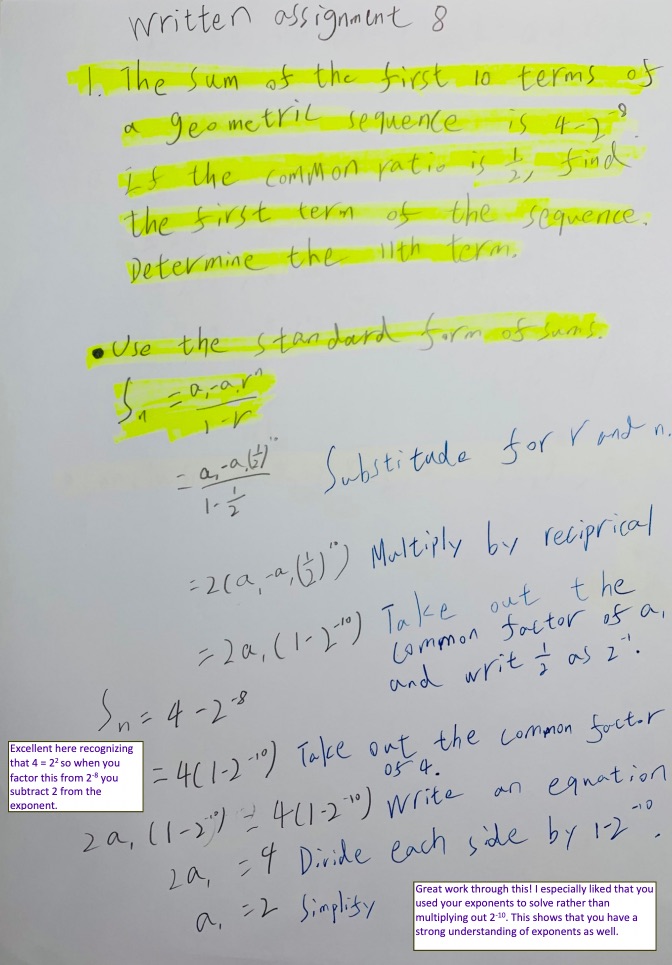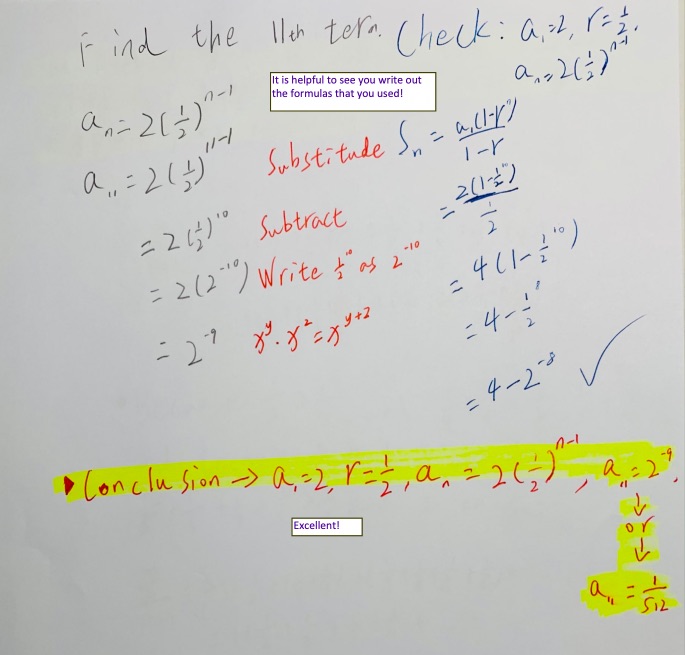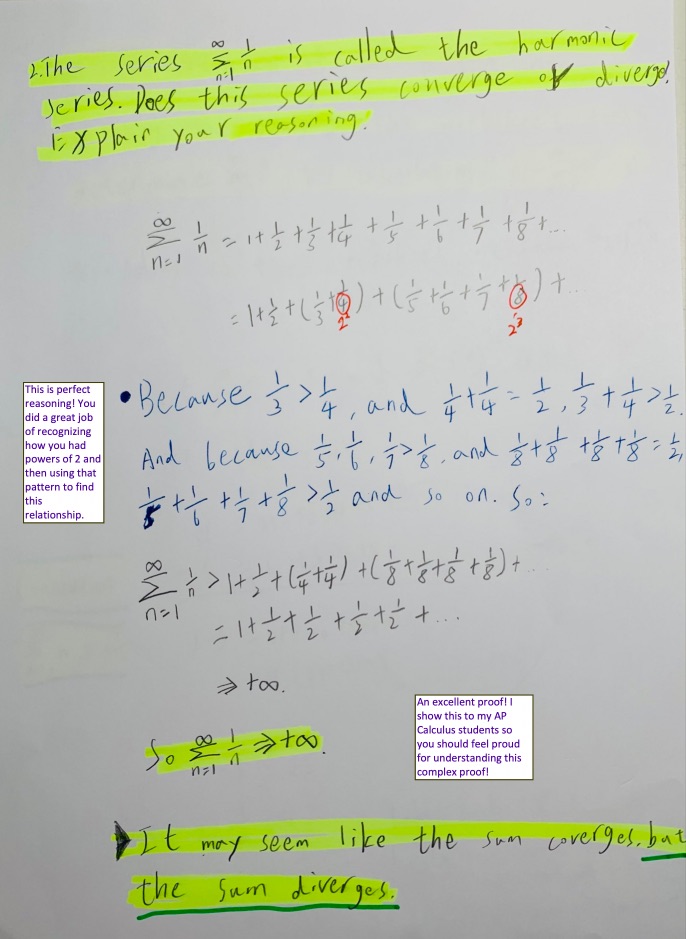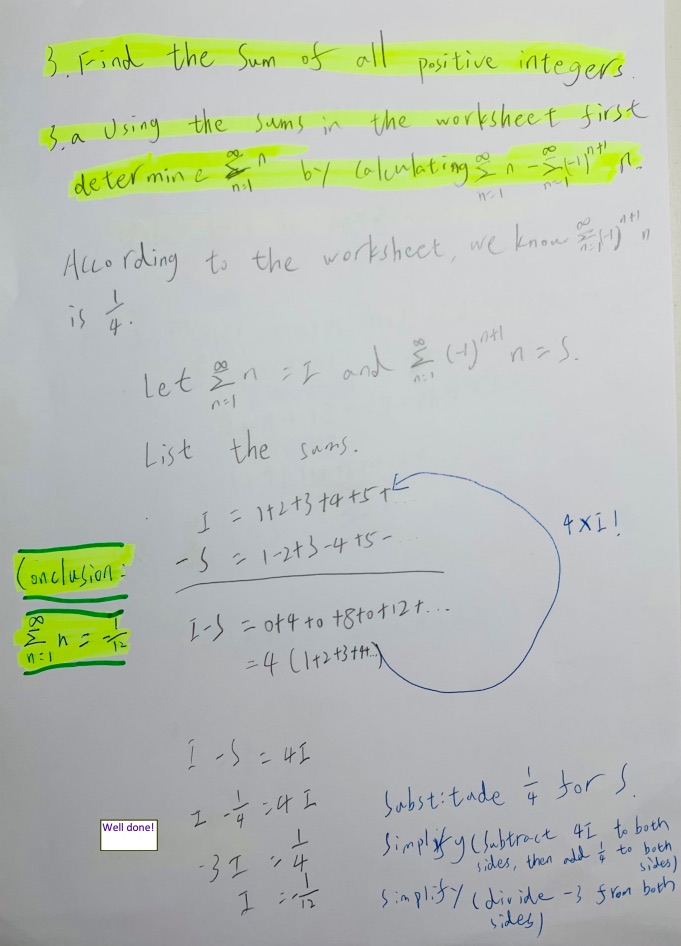Complete each problem below by hand. Show your work and provide a reason for each step. Calculators are not allowed on this assignment.
- The sum of the first 10 terms of a geometric sequence is $4-2^{-8}$. If the common ratio is $\frac{1}{2}$, find the first term of the sequence. Use this to determine the 11th term of the sequence.


- It can be difficult to imagein that the sum of an infinite nmber of values is equal to a finite number. When $\sum_{n=1}^{\infty} a_n=s$, where $s$ is a real number, we say the sum converges, when the sum does not converge we say it diverges. The series $\sum_{n=1}^{\infty} \frac{1}{n}$ is called the harmonic series. Does this series converage or diverge? Explain your reasoing.

- We wish to find the sum of all positive intergers, that is $1+2+3+4+\cdots$. Note we are not looking for a finite sum, but the infinite sum of all intergers.
$\color{blue}{Honors Topic: Convergence}$
We will try to find a solution using two different methods.
a. Using the sums in the worksheet first determine $\sum_{n=1}^{\infty} n$ by calulating $\sum_{n=1}^{\infty} n -\sum_{n=1}^{\infty} (-1)^{n+1}n$.

b. Now we will take a different approach. Excluding 1, add the sum in groups of threes until you have enough to see a pattern.
$$ 1 + ( 2 + 3 + 4 ) + ( 5 + 6 + 7 ) + \cdots . $$
Use this pattern to find $\sum_{n=1}^{\infty} n$

c. Based on your results, does the sum converge or diciverge? Is this what you would expect? Why or why not? Compare and contrast your findings in parts $\textbf{a}$ and $\textbf{b}$. What can we conclude?
